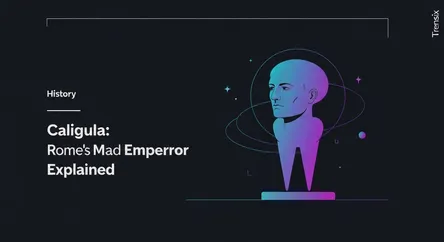History
Caligula: Rome's Mad Emperor Explained

An overview of Caligula, the notorious third emperor of Rome, whose brief reign is infamous for its alleged madness, cruelty, and extravagance.
What is it?
Gaius Caesar Augustus Germanicus (12 AD - 41 AD), better known by his childhood nickname Caligula ("Little Boot"), was the third emperor of the Roman Empire, ruling from 37 AD to 41 AD. Son of the celebrated general Germanicus, his initial months as emperor were widely popular; he abolished unfair taxes and recalled exiles. However, following a severe illness seven months into his reign, his behavior allegedly became erratic and tyrannical. Ancient historians describe him as a cruel, sadistic, and extravagant ruler who declared himself a living god and engaged in scandalous acts, including supposedly planning to make his horse a consul.
Why is it trending?
Caligula's reign is a dramatic and enduring historical case study of absolute power and potential madness. His notorious reputation for bizarre and cruel behavior has made him a popular and sensational figure in popular culture, including films and literature. There is also significant historical debate surrounding his legacy. While ancient sources from authors like Suetonius paint a picture of a deranged tyrant, some modern historians argue these accounts may be biased exaggerations written by the senatorial elite who opposed his autocratic style. This controversy keeps his story relevant in historical discussions.
How does it affect people?
Caligula's story serves as a historical cautionary tale about the dangers of unchecked power and autocracy. His brief, chaotic reign had a direct impact on Rome by depleting the treasury through lavish spending and creating a climate of fear among the political class through restored treason trials. His assassination by his own Praetorian Guard set a dangerous precedent, highlighting the vulnerability of the emperor and the significant influence the military could wield in Roman politics. His legacy continues to shape our understanding of Roman history and the complexities of interpreting historical sources.